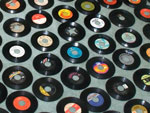When the 13 colonies first rebelled against England, they called on the help of established nations—including France and Spain—to succeed. After the Revolutionary War, the newborn United States gradually began to take part in world affairs itself, making payments and treaties, waging war, and withholding or offering aid. Today, the U.S. maneuvers its way through a constant web of decisions. Who does it choose to help and how? What kind of aid should it offer? Military? Economic? Social? When and why does it withhold aid? How have the choices it makes today grown out of those made in the past?
Late 20th-century Aid
Following the March 11 earthquake that rocked Japan, your students may have questions about the U.S. and international aid. Or maybe they're curious about the uprisings in the Middle East, a part of the world with which the U.S. has a complicated history of trade, war, and aid.
A good place to start learning about U.S. aid history is the U.S. Agency for International Development, or USAID.
A good place to start learning about U.S. aid history is, appropriately enough, the U.S. Agency for International Development, or USAID. Established in 1961 in an effort to separate non-military and military aid, USAID combined the social and economic aid efforts of a number of smaller initiatives under one "roof." Though the website's history page is dense, it provides a sense of the complexity of aid issues. If you want to dig a little deeper (and read a little more), download the primer on USAID. (The section on "Responding to Crises" may be particularly relevant right now.)
For statements on current events, check out the Senior Staff Speeches and Testimony section. Press releases also feature current information. For a broader view, search by location to learn more about USAID's work in Haiti, Egypt, Thailand, and other nations. Browse issues of USAID's newsletter, FrontLines, starting in 2003, to see what's been given the most press in the past few years.
Tracing Aid Back
Ready to head further back in time? In our Ask a Historian feature, look at aid in the Middle East, both non-military and military, during the 1950s.
As it has grown in power, the U.S. has shifted in its relationship to other parts of the world again and again.
Skip back a few years more and learn about the Marshall Plan, a well-known precursor of USAID designed to help Europe rebuild following World War II. USAID's small online exhibit on the Plan features audio, visual, and text primary sources, while the Library of Congress hosts an exhibit on the Plan. If you need more primary sources, try the document collection Truman & the Marshall Plan at the Harry S. Truman Library and Museum.
Of course, U.S international aid didn't begin with the 20th century and isn't limited to the federal government. Read up on the history of the American branch of the Red Cross, an organization founded by Clara Barton in the late 19th century. (The bibliography in the "Students" section recommends American author Pearl S. Buck's 1948 children's novel The Big Wave for learning about tsunamis. You might consider introducing this novel to students as a primary source itself, reflective of Buck and the context in which she wrote.)
Consider having students trace the U.S.'s relationship with a particular country or region back in time. For instance, what part is the U.S. playing in events in Libya now? What is our stance on the country and events there? What was it back in the early years of the U.S.? (For an idea, listen to historian Christine Sears describe the First Barbary War, one of the U.S.'s early overseas conflicts.) Between then and now, how has our position changed and evolved? Have we given aid or taken it away? When and how?
As it has grown in power, the U.S. has shifted in its relationship to other parts of the world again and again. Exploring the history of international aid might help you (or your students) follow these shifts through time and gain a better understanding of responses and relationships today.


 I am heartened when I communicate with prospective history educators who believe in the idea of teaching history beyond the textbook. These future teachers share innovative ideas of image and document analysis in an effort to move students toward developing historical habits of mind and keen interest in the world around them. It is my contention that teachers can and should consider the use of music in the same way they consider more archetypal sources—as essential to effective teaching.
I am heartened when I communicate with prospective history educators who believe in the idea of teaching history beyond the textbook. These future teachers share innovative ideas of image and document analysis in an effort to move students toward developing historical habits of mind and keen interest in the world around them. It is my contention that teachers can and should consider the use of music in the same way they consider more archetypal sources—as essential to effective teaching.